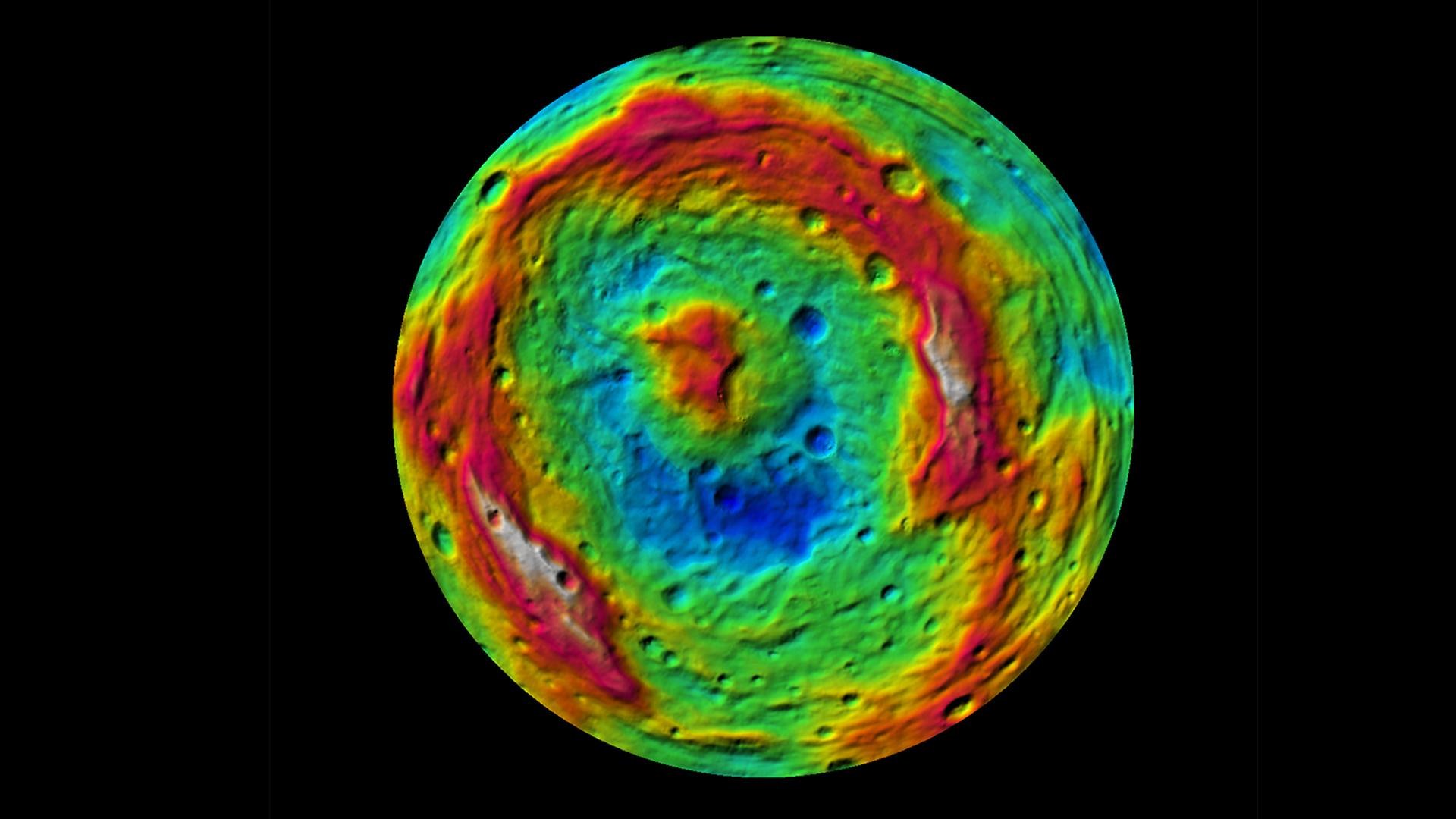The topography of Vesta’s south pole
The topography of Vesta’s south pole
From stereo images obtained with Dawn’s framing camera, scientists were able to produce a global shape model of asteroid Vesta. With diameters between 458 and 578 kilometres, Vesta is not a spherical body, so its surface topography is referenced to the theoretical surface of a three-axial ellipsoidal body with semi-major axes of 289 kilometres, 280 kilometres, and 229 kilometres, respectively. On Earth, we reference all topography to the spherical ‘surface’ of our global ocean level. The image shows the elevation of surface structures above or below this ellipsoidal body with a horizontal resolution of about 750 metres per pixel.
The terrain model of Vesta’s southern hemisphere shows a remarkable circular structure with a diameter of about 500 kilometres, its rim rising above the interior of the structure for more than 15 kilometres. From low-resolution images of the Hubble Space Telescope it was known that a big depression existed at Vesta’s south pole, and was suspected to be a big impact basin. Dawn scientists are investigating the processes that formed this structure.

